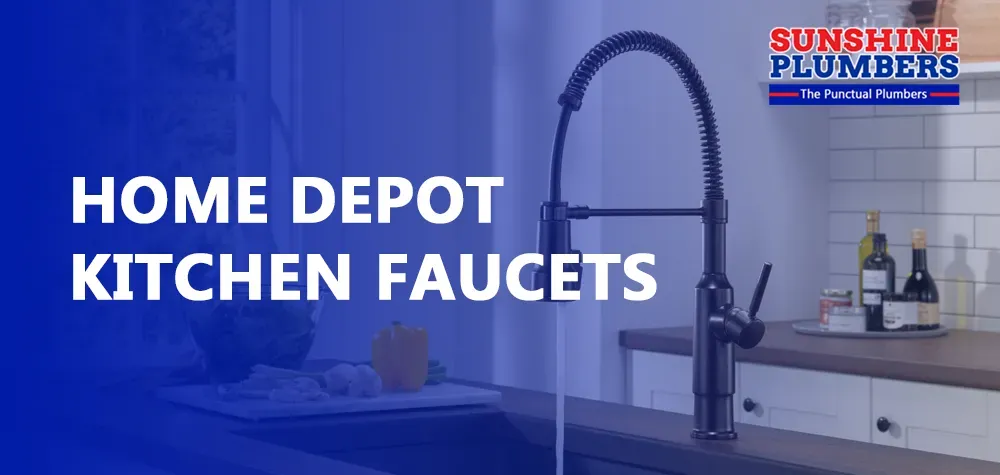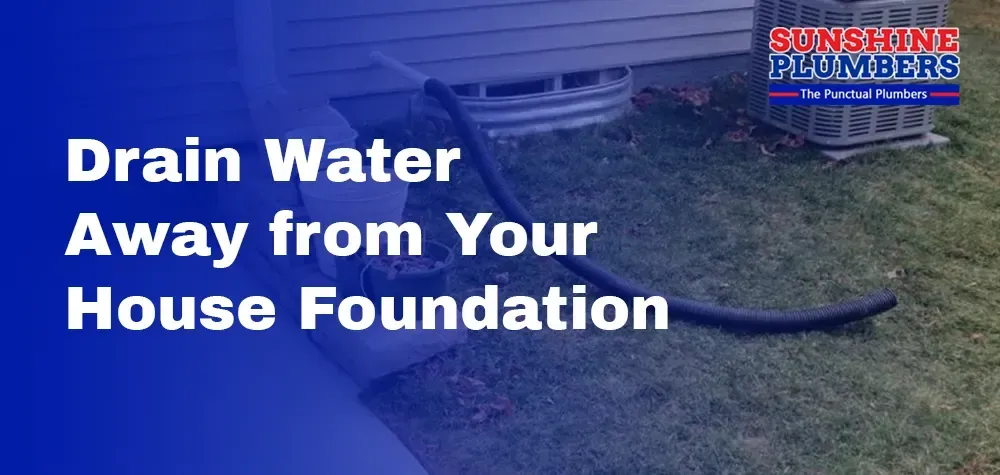How to Drain Water Away from Your House Foundation Effectively
Protecting Your Home's Foundation
Your home's foundation is its literal cornerstone, and protecting it is vital for the structural integrity of your house. Water is one of a foundation's most frequent threats. A basement that has too much water in it may experience erosion, cracking, and even floods. To prevent these issues, it is essential to have a drainage system that works. To assist you in correctly draining water from your home's foundation, we will examine a variety of methods and strategies in this post.
Realizing the Significance of Appropriate Drainage
You must comprehend the significance of this before learning how to drain water away from the foundation of your home. Water may cause incredible damage to your foundation in several ways.
- Erosion: The soil surrounding your foundation may be eroded by water, leaving behind voids that may lead to foundation settlement or cracking.
- Hydrostatic Pressure: The weight of excess water in the soil surrounding your foundation can exert hydrostatic pressure. This pressure can force water into your basement through cracks and gaps in your foundation, causing leaks and damage.
- Frost Heave: In colder climates, water that saturates the soil around your foundation can freeze during the winter months, causing it to expand. This expansion can push against your foundation and potentially cause structural damage.
- Mold and Mildew: A consistently damp foundation can lead to mold and mildew growth, not only affecting your foundation but also posing health risks.
- Foundation Settlement: Prolonged exposure to excess moisture can lead to foundation settlement, causing uneven floors, wall cracks, and other structural issues.
Now that we understand the importance of proper drainage, let's explore the various ways to keep water away from your foundation effectively.
- Gutters and Downspouts
One of the primary defenses against water damage to your foundation is a well-maintained gutter and downspout system. Gutters collect rainwater running off your roof and direct it away from your house.
A. Installing Gutters:
- Ensure you have properly sized gutters that can handle the volume of water that your roof sheds during heavy rain.
- Install gutters with the appropriate slope to direct water towards the downspouts.
- Ensure gutters are securely attached to your roofline to prevent sagging and misalignment.
B. Installing Downspouts:
- Position downspouts strategically, so they are evenly distributed around your house.
- Use downspout extensions to carry water several feet away from the foundation.
C. Regular Maintenance:
- Clean gutters and downspouts regularly to prevent clogs that can cause overflow.
- Inspect for leaks, loose connections, and damaged sections, repairing or replacing as needed.
- Proper Grading
Grading refers to the slope or contour of the ground around your home. It should be designed to encourage water to flow away from your foundation. To achieve proper grading:
- Slope Away: Ensure that the ground around your house slopes away from the foundation, at a minimum of 6 inches over the first 10 feet. This slope allows water to flow away from your home, rather than pooling around it.
- Regrade If Necessary: If your existing grading does not meet this requirement, you may need to regrade the soil to create the proper slope.
- Install French Drains: In areas with challenging grading or frequent heavy rains, consider installing a French drain system to divert water away from the foundation.
- French Drains
A French drain is a trench filled with gravel or rock, containing a perforated pipe that redirects water away from your foundation. They are highly effective in areas with poor grading or where the landscape naturally directs water towards your house. Here's how to install a French drain:
- Dig a Trench: Your foundation should have a trench dug around it that slopes away from the house.
- Lay the Perforated Pipe: The pipe holes should face downward when placed in the trench.
- Cover with Gravel: Fill the trench with gravel or rock, covering the pipe.
- Cover with Fabric and Soil: Place landscape fabric over the gravel, then cover the entire trench with soil.
- Sump Pump Systems
In some cases, you might need a sump pump to help manage excess water near your foundation. Sump pumps are typically installed in basements or crawl spaces and are used to remove water that accumulates in a sump pit. Here's how to install and maintain a sump pump system:
- Dig a Sump Pit: To make a sump pit, dig a hole in your crawl space or basement. The size and depth of the pit will vary based on your unique requirements.
- Install the Sump Pump: Ensure that the sump pump is firmly installed in the pit.
- Connect Drainage Pipes: Link the sump pump's drainage pipes so that water is directed away from the foundation.
- Regular Maintenance: Test your sump pump regularly and keep the pit clean to prevent clogs.
- Exterior Waterproofing
Waterproofing the exterior of your foundation can be a highly effective solution, especially in cases where other drainage methods alone may not be sufficient. Exterior waterproofing involves:
- Excavation: Digging around the foundation to expose it for inspection and repairs.
- Sealing Cracks: Repairing any cracks or gaps in the foundation to prevent water infiltration.
- Applying Waterproof Coatings: Applying waterproof coatings or membranes to the foundation's exterior to repel water.
- Backfilling: After the waterproofing is complete, backfill the excavated area with soil that encourages water drainage away from the foundation.
- Downspout Extensions
Downspout extensions are a simple yet effective way to ensure water is directed away from your foundation. While standard downspouts may carry water a short distance from your house, extensions can be added to increase the distance. Some options for downspout extensions include:
- Flexible Extensions: These can be easily positioned to carry water away from the foundation.
- Rigid Extensions: Rigid extensions, typically made from PVC, can be a more permanent solution.
- Burying Extensions: You can bury extensions underground to guide water away from your house, preventing erosion and foundation damage.
- Rain Barrels
An economical and environmentally friendly way to handle extra rainfall is with rain barrels. Water collected for later use can be used around your foundation rather than letting it pool. Here's how to use rain barrels effectively:
- Connect Gutters: Install a downspout diverter to direct water from your gutters into the rain barrel.
- Overflow and Diverter: Ensure that the rain barrel has an overflow system to prevent overflow during heavy rain. Excess water can still be directed away from your foundation through a diverter.
- Use the Water: The collected rainwater can be used for gardening, lawn irrigation, or other non-potable uses, reducing the demand for municipal water sources.
- Landscaping Solutions
Strategically placed plants and landscaping features can also help manage water around your foundation:
- Swales: These are shallow, grassy depressions that guide water away from the foundation.
- Rain Gardens: Designed to absorb excess water, rain gardens can be planted with moisture-loving plants to capture and slow the flow of water.
- Proper Plant Selection: Choose plants and trees that have minimal water requirements and won't deplete the soil of moisture near your foundation.
Safeguarding Your Home's Foundation
A vital part of becoming a homeowner is shielding the foundation of your house against water damage. Water can be an extremely powerful enemy, but you can successfully divert water from the foundation of your home by using the appropriate methods and strategies. From maintaining your gutters and downspouts to implementing more extensive solutions like French drains or sump pump systems, there are various options available to suit your specific needs. The key is to be proactive and address potential issues before they develop into costly and damaging problems. By following these methods, you can safeguard your foundation and enjoy a dry, stable, and structurally sound home for years to come.
Effective Home Foundation Drainage Solutions
Are you worried about water pooling around your house foundation? At Sunshine Plumbers, we've got the expertise and solutions to ensure your foundation stays dry and secure. With our top-notch drainage services, including gutter installations, downspout extensions, and French drain systems, we'll customize a solution tailored to your home's unique needs. Don't wait until water damage becomes a costly issue; let us help you safeguard your foundation today. Trust Sunshine Plumbers for effective drainage solutions that keep your home strong and water-free!
Strong and Dry Home Foundation
When it comes to protecting your biggest investment, your home, Sunshine Plumbers is your partner in maintaining a solid foundation. Our team of skilled professionals will assess your property's drainage requirements and provide you with a comprehensive plan to keep water away from your foundation. Whether it's installing sump pump systems, exterior waterproofing, or incorporating landscaping solutions, we're committed to ensuring the longevity of your home. Choose Sunshine Plumbers for a foundation that remains strong, dry, and trouble-free. Contact us today for expert advice and exceptional service!




